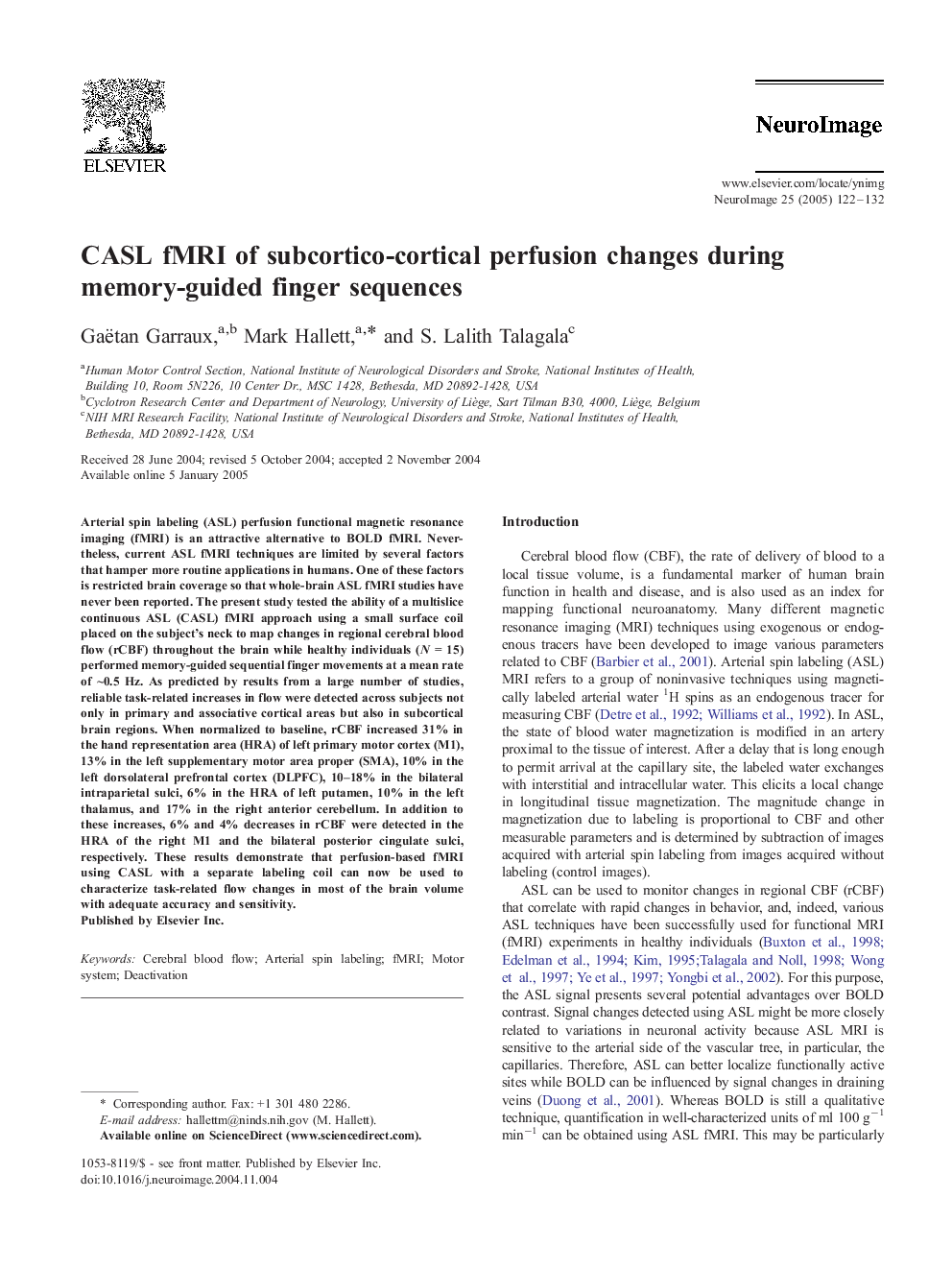| Article ID | Journal | Published Year | Pages | File Type |
|---|---|---|---|---|
| 9198482 | NeuroImage | 2005 | 11 Pages |
Abstract
Arterial spin labeling (ASL) perfusion functional magnetic resonance imaging (fMRI) is an attractive alternative to BOLD fMRI. Nevertheless, current ASL fMRI techniques are limited by several factors that hamper more routine applications in humans. One of these factors is restricted brain coverage so that whole-brain ASL fMRI studies have never been reported. The present study tested the ability of a multislice continuous ASL (CASL) fMRI approach using a small surface coil placed on the subject's neck to map changes in regional cerebral blood flow (rCBF) throughout the brain while healthy individuals (N = 15) performed memory-guided sequential finger movements at a mean rate of â¼0.5 Hz. As predicted by results from a large number of studies, reliable task-related increases in flow were detected across subjects not only in primary and associative cortical areas but also in subcortical brain regions. When normalized to baseline, rCBF increased 31% in the hand representation area (HRA) of left primary motor cortex (M1), 13% in the left supplementary motor area proper (SMA), 10% in the left dorsolateral prefrontal cortex (DLPFC), 10-18% in the bilateral intraparietal sulci, 6% in the HRA of left putamen, 10% in the left thalamus, and 17% in the right anterior cerebellum. In addition to these increases, 6% and 4% decreases in rCBF were detected in the HRA of the right M1 and the bilateral posterior cingulate sulci, respectively. These results demonstrate that perfusion-based fMRI using CASL with a separate labeling coil can now be used to characterize task-related flow changes in most of the brain volume with adequate accuracy and sensitivity.
Related Topics
Life Sciences
Neuroscience
Cognitive Neuroscience
Authors
Gaëtan Garraux, Mark Hallett, S. Lalith Talagala,
